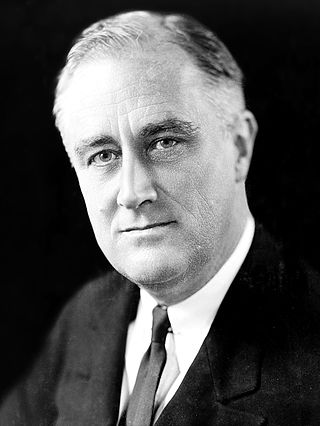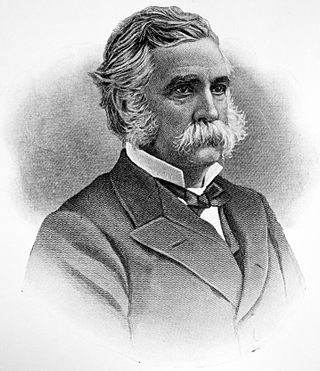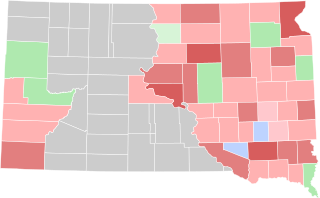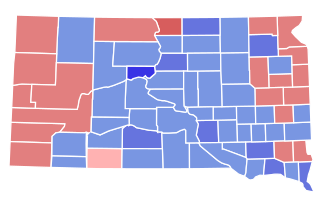| |||||||||||||||||
| |||||||||||||||||
| |||||||||||||||||
The 1890 Rhode Island gubernatorial election was held on April 2, 1890. Democratic nominee John W. Davis defeated incumbent Republican Herbert W. Ladd with 48.76% of the vote.
| |||||||||||||||||
| |||||||||||||||||
| |||||||||||||||||
| Elections in Rhode Island |
|---|
 |
The 1890 Rhode Island gubernatorial election was held on April 2, 1890. Democratic nominee John W. Davis defeated incumbent Republican Herbert W. Ladd with 48.76% of the vote.
Major party candidates
Other candidates
| Party | Candidate | Votes | % | ±% | |
|---|---|---|---|---|---|
| Democratic | John W. Davis | 20,548 | 48.76% | ||
| Republican | Herbert W. Ladd (incumbent) | 18,988 | 45.06% | ||
| Prohibition | John H. Larry | 1,820 | 4.32% | ||
| Independent | Arnold B. Chace | 752 | 1.78% | ||
| Majority | 1,560 | ||||
| Turnout | |||||
| Democratic gain from Republican | Swing | ||||

The 1924 United States presidential election was the 35th quadrennial presidential election, held on Tuesday, November 4, 1924. In a three-way contest, incumbent Republican President Calvin Coolidge won election to a full term. Coolidge was the second vice president to ascend to the presidency and then win a full term.

The 1932 United States presidential election was the 37th quadrennial presidential election, held on Tuesday, November 8, 1932. The election took place against the backdrop of the Great Depression. The incumbent Republican President Herbert Hoover was defeated in a landslide by Democrat Franklin D. Roosevelt, the governor of New York and the vice presidential nominee of the 1920 presidential election. Roosevelt was the first Democrat in 80 years to simultaneously win an outright majority of the electoral college and popular vote, a feat last accomplished by Franklin Pierce in 1852, as well as the first Democrat in 56 years to win a majority of the popular vote, which was last done by Samuel J. Tilden in 1876. Roosevelt was the last sitting governor to be elected president until Bill Clinton in 1992. Hoover was the last incumbent to lose an election to another term until Gerald Ford lost 44 years later. The election marked the effective end of the Fourth Party System, which had been dominated by Republicans. It was the first time since 1916 that a Democrat was elected president.

The 1890 United States House of Representatives elections were held for the most part on November 4, 1890, with five states holding theirs early in between June and October. They occurred in the middle of President Benjamin Harrison's term. Elections were held for 332 seats of the United States House of Representatives, representing 44 states, to serve in the 52nd United States Congress. Special elections were also held throughout the year.

The 1888 United States House of Representatives elections were held for the most part on November 6, 1888, with three states holding theirs early between June and September. They occurred at the same time as the election of President Benjamin Harrison. Elections were initially held for 325 seats of the United States House of Representatives, representing 38 states, to serve in the 51st United States Congress. Six new states would later join the union and increase the House to 332 seats. Special elections were also held throughout the year.

Herbert Warren Ladd was the 40th and 42nd Governor of Rhode Island for two terms: 1889–90 and 1891–92.
The Massachusetts Republican Party (MassGOP) is the Massachusetts branch of the U.S. Republican Party.

George Washington Ladd was a U.S. Representative from Maine.

John William Davis was a United States Democratic politician, who served as the 38th and 41st Governor of Rhode Island.

The 1890–91 United States Senate elections were held on various dates in various states. As these U.S. Senate elections were prior to the ratification of the Seventeenth Amendment in 1913, senators were chosen by state legislatures. Senators were elected over a wide range of time throughout 1890 and 1891, and a seat may have been filled months late or remained vacant due to legislative deadlock. In these elections, terms were up for the senators in Class 3.

The 2012 United States presidential election in Kansas took place on November 6, 2012, as part of the 2012 United States presidential election in which all 50 states plus the District of Columbia participated. Kansas voters chose six electors to represent them in the Electoral College via a popular vote pitting incumbent Democratic President Barack Obama and his running mate, Vice President Joe Biden, against Republican challenger and former Massachusetts Governor Mitt Romney and his running mate, Congressman Paul Ryan. Romney and Ryan carried the state with 59.59 percent of the popular vote to Obama's and Biden's 38.00 percent, thus winning the state's six electoral votes.
The 1883 United States Senate election in Massachusetts was held in January 1883. Incumbent Republican Senator George Frisbie Hoar was re-elected to a second term in office despite a serious challenge from Democrats and members of his own party.

The 1892 South Dakota gubernatorial election was held on November 8, 1892. Incumbent Republican Governor Arthur C. Mellette declined to seek re-election to a third term. Former territorial legislator Charles H. Sheldon was nominated by the Republican Party as Mellette's replacement, and he faced former legislator Abraham Lincoln Van Osdel, a leader in the South Dakota Farmers' Alliance and the nominee of the Independent Party, along with Democratic nominee Peter Couchman, in the general election. The result was largely a replay of the 1890 election, with Sheldon winning by a large margin, but only a plurality, and Van Osdel taking second place over Couchman.

The 1926 United States Senate special election in North Dakota took place on June 30, 1926. On June 22, 1925, Republican Senator Edwin F. Ladd died in office. Governor Arthur G. Sorlie appointed Gerald Nye, a former congressional candidate and a prominent progressive activist, to fill Ladd's vacancy. A special election and regularly scheduled election were scheduled for the same year, though the special election, to fill the remaining months Ladd's term, took place months before the regularly scheduled election.

The 1946 United States Senate election in Tennessee was held on November 5, 1946. Incumbent Democratic Senator Kenneth D. McKellar was re-elected to a sixth term in office. He defeated a primary challenge by Edward W. Carmack Jr. and easily won the general election against Republican William B. Ladd, and Independent candidate John Randolph Neal Jr.

The 1892 Wyoming gubernatorial special election was held on November 6, 1892. Republican Governor Francis E. Warren, who was elected in 1890, resigned several weeks into his term after being elected to the U.S. Senate by the state legislature, elevating Secretary of State Amos W. Barber to the governorship and triggering a special election for the balance of Warren's term.

The 1891 Rhode Island gubernatorial election was held on April 1, 1891. Democratic incumbent John W. Davis received 48.95% of the vote and Republican nominee Herbert W. Ladd 46.19%. With no candidate attaining a majority of the vote it was decided by the Rhode Island General Assembly The Republican majority selected Ladd.

The 1889 Rhode Island gubernatorial election was held on April 3, 1889. Democratic nominee John W. Davis received 49.38% of the vote and the Republican nominee Herbert W. Ladd 39.13%. With no candidate attaining a majority of the vote it was decided by the Rhode Island General Assembly. In the same election, the Republican Party had won a small majority in the legislature and selected Ladd as Governor.

The 1900 Illinois gubernatorial election was held on November 6, 1900.

The 1928 South Dakota gubernatorial election was held on November 6, 1928. Incumbent Democratic Governor William J. Bulow ran for re-election to a second term. In the general election, he faced Attorney General Buell F. Jones, the Republican nominee. Despite Republican presidential nominee Herbert Hoover overwhelmingly defeating Democratic nominee Al Smith overwhelmingly in South Dakota, Bulow defeated Jones by a decisive margin to retain the governorship. In so doing, he became the first Democratic candidate for Governor to receive a majority of the vote in the state's history.

The 1892 Illinois gubernatorial election was held on November 8, 1892.